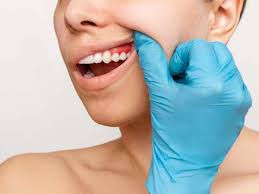How to Reduce Pain After Tooth Removal?
- dentalclinicdubai7
- Oct 3
- 5 min read
One of the most frequent concerns patients raise is, how to reduce pain after tooth removal? Tooth Removal In Dubai is a routine dental procedure, yet the thought of discomfort during recovery often causes anxiety. While some mild pain and swelling are expected, modern dentistry has made the process far more manageable. Effective preparation, proper aftercare, and simple lifestyle adjustments can significantly reduce discomfort and promote faster healing. Whether you are searching for a Dental Clinic Near me or considering specialized options such as a Dental Clinic Near me in Dubai, understanding pain management after extraction will help you recover smoothly and confidently.
What is Treatment and How it Works?
Tooth removal, also known as extraction, is the process of taking out a tooth from its socket in the jawbone. This may be required due to severe decay, gum disease, impacted wisdom teeth, or overcrowding. The procedure begins with anesthesia, which ensures the extraction itself is painless. Depending on the situation, the dentist may perform a simple extraction for visible teeth or a surgical extraction for impacted or broken ones. Many Dentists in Dubai explain that most discomfort does not come from the actual procedure but from the healing phase. Pain occurs as tissues begin to repair, but with the right techniques, patients can minimize this discomfort and support recovery.

Importance of Treatment:
Tooth removal is often essential for maintaining oral health. An untreated tooth that is severely decayed or infected can spread bacteria to surrounding gums, bone, or even the bloodstream. Extraction relieves pain, prevents further complications, and creates space for orthodontic adjustments when needed. However, the importance of this treatment goes beyond the procedure itself. Managing pain effectively after extraction ensures that patients remain comfortable and can continue their normal routines. Those who undergo extraction at established facilities, such as an Enfield Dental Clinic in Dubai, often receive comprehensive aftercare guidance that prioritizes both healing and pain management.
Types of Treatment:
Different types of extractions result in different pain levels and recovery times:
Simple extraction: This involves loosening and removing a visible tooth. Pain is usually mild, and recovery is faster.
Surgical extraction: This is needed for impacted or broken teeth, often requiring incisions and sutures. Pain can be more noticeable in the first few days, with a slightly longer recovery period.
Patients often ask, how to reduce pain after tooth removal of different types? The answer lies in following tailored aftercare instructions, using cold compresses, and relying on appropriate pain management techniques.
Preparation:
Good preparation reduces both pain and complications after extraction. Patients preparing for the procedure should:
Share their full medical history and medications with the dentist.
Undergo X-rays to help assess the tooth’s condition.
Arrange for someone to accompany them if sedation is used.
Eat a light meal beforehand if local anesthesia is planned.
Prepare soft foods, pain relievers, and ice packs in advance.
Many patients also ask, what can I do before tooth removal to reduce pain afterward? The answer includes preparing your home environment for rest, stocking your fridge with healing-friendly foods, and ensuring you have aftercare essentials on hand.
Aftercare:
Aftercare is the most important factor in reducing pain following extraction. So, how to reduce pain after tooth removal in practical terms? Here are the most effective methods:
Bite on gauze immediately after the procedure to control bleeding and help the blood clot form.
Apply ice packs for the first 24 hours to minimize swelling and numb discomfort.
Take prescribed pain relievers or over-the-counter medication as directed.
Rest for at least 24 hours and avoid strenuous activities.
Eat soft, cool foods like yogurt, smoothies, or mashed potatoes.
Avoid smoking, alcohol, or straws, as these can disrupt healing and cause dry socket.
Maintain oral hygiene with gentle rinsing after 24 hours, using warm salt water.
Most patients notice that pain peaks in the first 48 hours, then gradually subsides within a few days. Following aftercare closely ensures comfort throughout the recovery process.
Ideal Candidate:
Not everyone needs extraction, but when it becomes necessary, the ideal candidates include:
People with severely decayed or infected teeth beyond repair.
Patients with impacted wisdom teeth causing discomfort.
Individuals preparing for orthodontic treatments with overcrowded teeth.
Those with advanced gum disease affecting tooth stability.
For these candidates, proper aftercare and pain management are crucial to achieving a smooth and comfortable recovery.
How to Choose the Right Clinic?
The quality of care received during and after extraction greatly affects pain management. Many patients search for a Dental Clinic Near me or explore trusted options like a Dental Clinic Near me in Dubai. When choosing a clinic, important considerations include:
The experience and qualifications of the dental team.
Availability of modern anesthesia and sedation options.
Clear aftercare support and pain management instructions.
Positive patient reviews and reputation for comfort-focused care.
Selecting the right clinic ensures both a smooth extraction process and a supportive recovery journey.
Risks:
While extractions are safe, there are risks that can increase pain if aftercare is not followed:
Dry socket, caused when the blood clot dislodges.
Infection at the extraction site.
Prolonged swelling or bleeding.
Rare temporary nerve sensitivity.
These risks can be prevented by adhering to professional aftercare guidance and avoiding harmful habits during recovery.
Benefits:
The benefits of extraction and proper pain management far outweigh the temporary discomfort. Patients can expect:
Relief from ongoing tooth pain or infection.
Prevention of dental complications spreading further.
Improved alignment and easier orthodontic treatments.
Long-term oral health and hygiene improvements.
A more comfortable recovery when pain is managed effectively.
Pain after extraction is temporary, while the benefits are long-lasting for overall dental well-being.
FAQs:
How can I reduce pain after tooth removal quickly?
Use ice packs, rest, and take prescribed medication during the first 48 hours.
How long will the pain last?
Pain usually peaks in the first two days and eases within a week.
What foods help reduce pain after extraction?
Soft, cool foods like smoothies, yogurt, and mashed vegetables help minimize discomfort.
Should I avoid exercise after tooth removal?
Yes, avoid strenuous activity for at least 24–48 hours to prevent increased pain or bleeding.
Conclusion:
So, how to reduce pain after tooth removal? The key lies in preparation, following professional aftercare, and making smart choices during recovery. Cold compresses, proper medication, rest, and a soft-food diet are the most effective strategies for minimizing discomfort. Whether you are searching for a Dental Clinic Near me, considering advanced care at a Dental Clinic Near me in Dubai, consulting professional Dentists in Dubai, or seeking support from a trusted Enfield Dental Clinic in Dubai, pain management is an essential part of recovery. With the right care and patience, discomfort fades quickly, leaving you with long-term relief and healthier oral health.








Comments